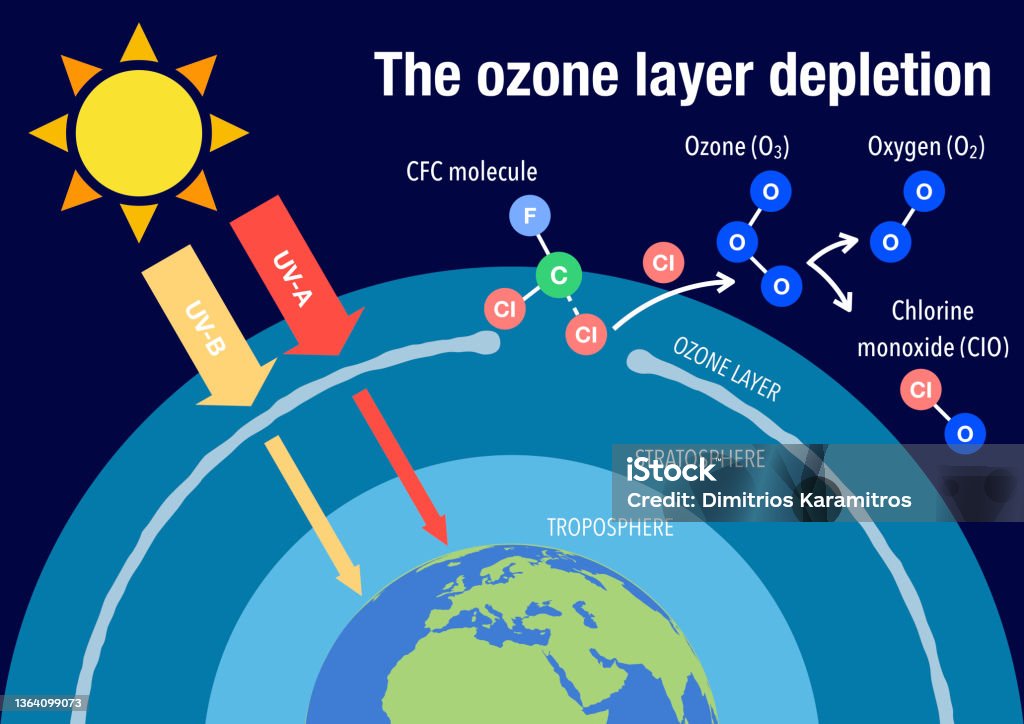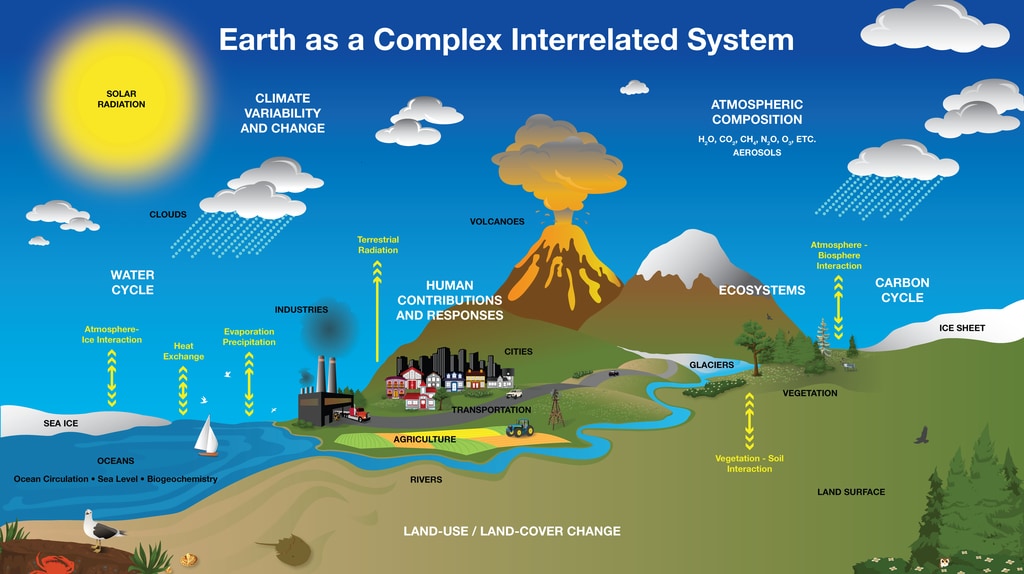
Global Wildfires Threaten the
Recovery of the Planet’s Ozone Layer
Rodielon Putol / Earth.com
(July 17, 2024) — While the ozone layer has been successfully healing over the past decades – thanks to international environmental policies like the Montreal Protocol – it is now facing a complex and yet unforeseen challenge.
New research has uncovered a paradoxical impact of large wildfires on this protective layer of the atmosphere, throwing a fresh spotlight on the complex interaction between natural events and atmospheric dynamics.

The Smoke-charged Vortex
In an attempt to understand the impact of wildfires on the ozone layer, the researchers turned their attention to the smoke-charged vortex (SCV). This powerful, smoke-laden whirlpool, formed as a result of wildfires, pulls smoke into the middle stratosphere, reaching altitudes up to 35 kilometers.
This phenomenon was observed during the 2019/20 Australian wildfires, which resulted in a staggering increase in stratospheric aerosols.
“By combining satellite observations with numerical model calculations, we investigated the transport process of the 2019-2020 Australian mega-bushfire to the stratosphere and its impact on aerosol burden and chemistry in the middle stratosphere, focusing on the role of SCVs that have been largely overlooked in the past,” wrote the researchers.
Study co-author Hang Su, a professor in the Institute of Atmospheric Physics at the Chinese Academy of Sciences, described the impacts of the smoke-charged vortex.
“This process led to at least a doubling of the aerosol burden in the southern hemisphere’s middle stratosphere. Once reaching such high altitudes, these aerosols initiated a series of chemical reactions at their surface that impacted ozone concentrations,” noted Professor Su.

Wildfire-induced Aerosols and the Ozone Layer
These wildfire-induced aerosols seem to be a double-edged sword when it comes to the ozone layer. While they hastened ozone depletion in the lower stratosphere, they also contributed to an increase in ozone in the middle stratosphere.
Professor Yafang Cheng, a study co-author from the Max Planck Institute for Chemistry, elaborated on the implications of this phenomenon.
“Our study uncovers a mechanism by which absorbing aerosols in wildfire smoke, such as black carbon, can induce and sustain enormous smoke-charged vortices spanning thousands of kilometers, fundamentally changing the stratospheric circulation,” said Professor Chang.

Interconnectedness of Earth’s Systems
Study first author Dr. Chaoqun Ma, a postdoc researcher in Cheng’s team at the MPIC, expressed his fascination with the interconnectedness of the Earth’s systems.
“I love this study because it once again demonstrates how closely different parts of the Earth system are connected,” said Dr. Ma.
“Smoke from a forest fire can significantly change the wind and circulation tens of kilometers above the ground, which allows the smoke to modify the ozone layer, influencing life on our planet.”
![]()
Increasingly Intense Wildfires
The ozone layer’s role is critical for shielding all life forms on Earth from harmful UV radiation.
While the Montreal Protocol’s success in curbing ozone-depleting substances was a colossal achievement, these new findings pinpoint natural events – intensified by climate change – as additional threats to this crucial atmospheric layer.
With rising temperatures driving an increase in the frequency and intensity of wildfires, the formation of SCVs and their impact on the stratosphere could become more prevalent, posing a potential hazard to the ozone layer.

Protecting the Ozone Layer
The global community has long recognized the importance of protecting the ozone layer. The Montreal Protocol, signed in 1987, is a testament to international cooperation, successfully phasing out the use of many ozone-depleting substances (ODS).
This landmark agreement has led to significant recovery of the ozone layer, with scientists predicting a full restoration by the middle of the 21st century.
However, as new research reveals, natural phenomena like wildfires pose unforeseen challenges that require adaptive strategies.
Governments, scientists, and environmental organizations must continue to work together to address both man-made and natural threats to the ozone layer. This includes monitoring ozone concentrations, regulating emissions that contribute to climate change, and developing innovative solutions to mitigate the impact of wildfires.
Public awareness and education on the importance of the ozone layer are also crucial. Individuals can contribute by supporting policies that aim to reduce greenhouse gas emissions, making environmentally conscious choices, and by staying informed about the latest scientific findings.
The study was published in the journal Science Advances.
Posted in accordance with Title 17, Section 107, US Code, for noncommercial, educational purposes.